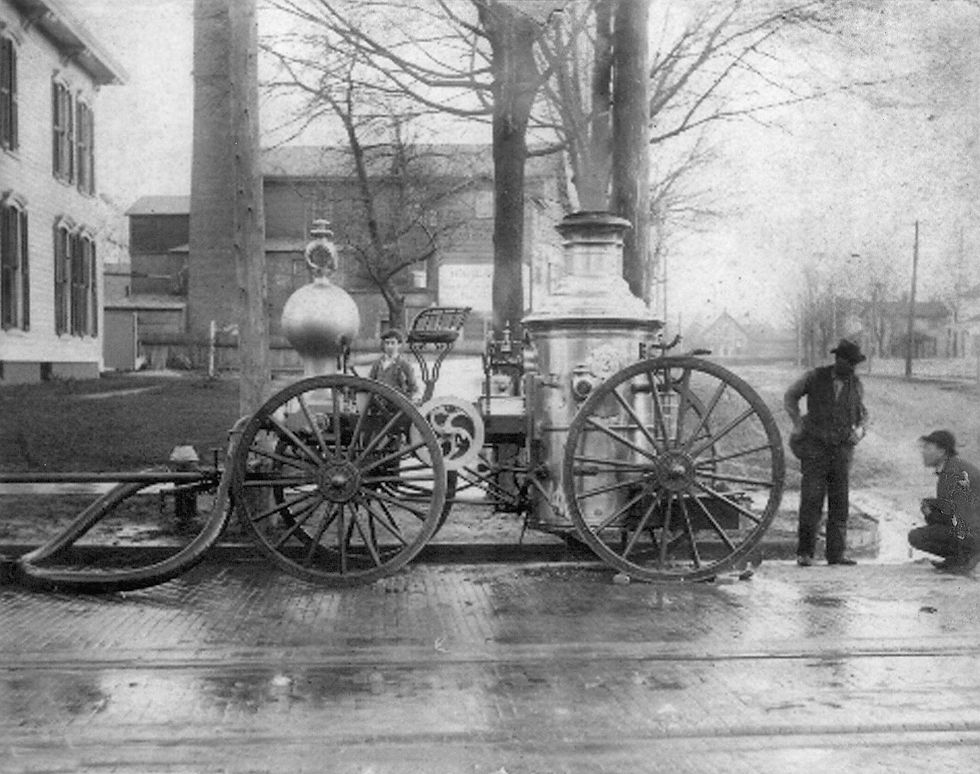The Fire Department:
The fire department in Ashtabula at the time was more like a gentleman's club, as were many volunteer fire departments across the county. It's not that the firefighters didn't care or didn't want to do a good job, but the idea of professionalism in terms of training, safety, and expertise was still in its infancy in America. The Ashtabula fire department, along with many other small city fire departments across the country, suffered because of a lack of training and professionalism. America's small cities and towns were still at the crossroads of developing full-time professional fire fighting units. Even though Ashtabula had a volunteer fire company of over 200 men, a number of hand fire pumpers and even a horse drawn steam powered fire engine, they were in no way even close to being prepared to deal with a disaster like this one.
Gallery
Click on Photos to Enlarge

These are some of the men of the Ashtabula Volunteer Protection Co. (Photo from of the Ashtabula Fire Dept. Archives)

This is a photo is of the Topky Fire Station #4 in Ashtabula. (Photo from of the Ashtabula Fire Dept. Archives)

The Neptune steam powered fire pumper was high end modern technology at the time of the disaster. This fire pumper and its crew of men did respond to the fire the night of the disaster, but its men were never ordered to throw water on the fire. (Photo from of the Ashtabula Fire Dept. Archives)

This photo shows men in the Fire Protection Hose Co. posing for a photo in 1889. This photo was taken thirteen years after the disaster when the fire protection company went from being a gentleman's club to a professional firefighting unit. (Photo from of the Ashtabula Fire Dept. Archives)

The Ashtabula Fire Protection Co.'s Moore Hook & Ladder. (Photo from of the Ashtabula Fire Dept. Archives)

In this photo we see the Protection Company that was located at the Sweet Bros. Livery & Trasnfer Barn. (Photo from of the Ashtabula Fire Dept. Archives)

The man on the left in this photo is Glen A. Knapp the fire chief at the time of the disaster. He became a very controversial figure the night of the disaster, because he showed up at the fire after he had been drinking with friends at the "Odd Fellows Hall." Many said he seemed dazed and confused and never took real charge of the scene. After the investigation he was relieved of his command.

This bell was used to sound the alarm the night of the disaster Dec. 29, 1876. It now sits in front of the Ashtabula Fire Dept. located at 4326 Main Ave. Ashtabula, Ohio 44004

This is the plaque that sits next to the bell describing its importance to the city.




